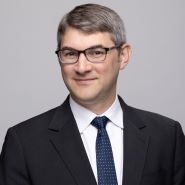The Internet of Medical Things (IoMT) in the World of Medical Devices
- November 20, 2018
- Article
Associated People
Associated Practices
Associated Technologies
The Internet of Medical Things (IoMT) is a hot topic in the world of medical devices. This summer, at the MedTech conference in Philadelphia, IoMT was the word on everyone’s lips. No wonder, as a recent report by Allied Market Research predicts that IoMT will be a $136.8 billion market by 2021.
IoMT devices are by their nature designed to work with a system by connecting many devices together in a way that makes the whole greater than a mere sum of the parts. However, when drafting claims to cover IoMT devices, infringement and divided infringement in particular should be considered. Because many of the devices in the system may be made or used by different parties, it is important to draft the claims from the perspective of one device or from the controller or server. Without such claim drafting strategies, claims which may be granted in this area could be very difficult to enforce.
Subject matter eligibility is another issue that often arises when attempting to patent IoMT inventions. Because IoMT devices will rely on sensors and software to operate, claims directed to these features may often be considered as being directed to abstract ideas. Without careful drafting of the claims and the specification it may be difficult to argue that the claims are not abstract or are directed to significantly more than the abstract idea.
One way to improve your chances in the area of subject matter eligibility is to explain in your specification how your IoMT device solves a particular problem in the healthcare realm. By framing your description as a technical solution to a specific problem, you will greatly increase your chances of overcoming or avoiding subject matter eligibility issues with your invention.
A final issue to consider in the field of IoMT is drafting patents to withstand a post-grant challenge. Because the market for medical devices can be so large, a post-grant challenge of newly issued IoMT patents may become more common. This issue provides even greater reason to ensure that not only are the claims well written with an appropriate number of backup positions, but that the specification is well written to provide the needed support for subject matter eligibility, means-plus-function or written description issues.
Recent Publications
5 IP Rules to Know to Protect Your Business in the United States (article in French)
Coaching INPI Newsletter










 Counseling & Strategic Advice
Counseling & Strategic Advice IP Transactions
IP Transactions Litigation
Litigation PTAB Proceedings
PTAB Proceedings Start-Up
Start-Up Technology Transfer
Technology Transfer Trademark & Designs
Trademark & Designs U.S. Patent Procurement (Application Drafting & Prosecution)
U.S. Patent Procurement (Application Drafting & Prosecution)








